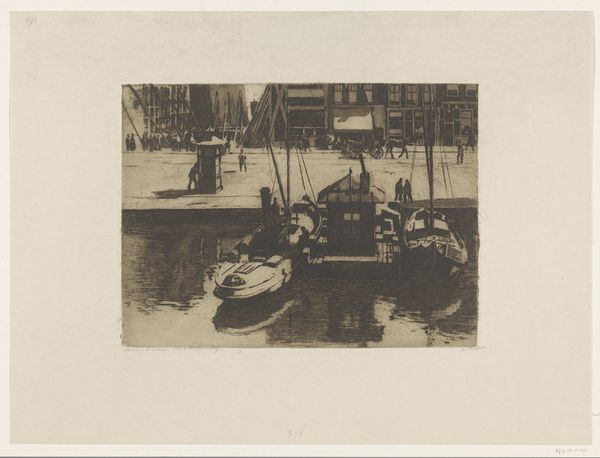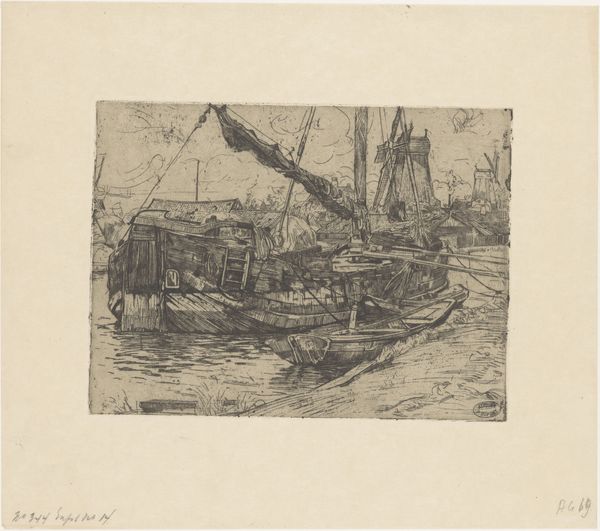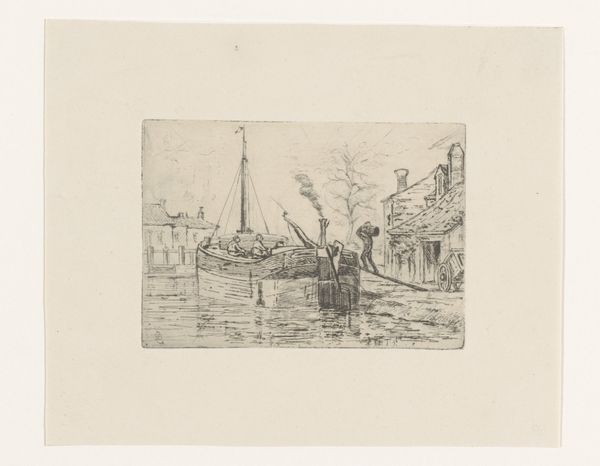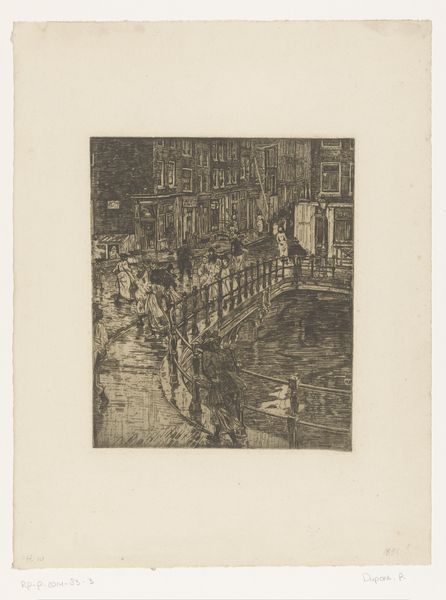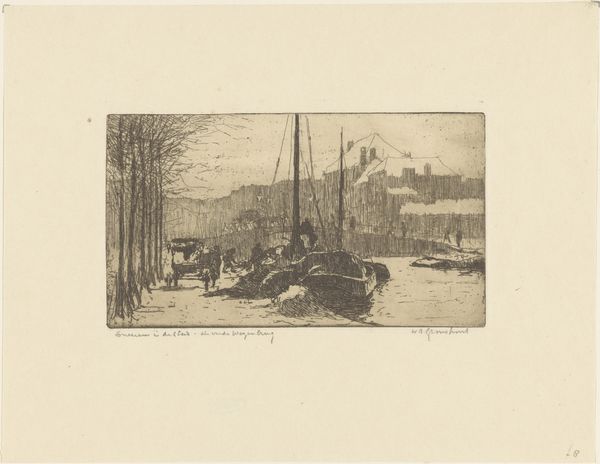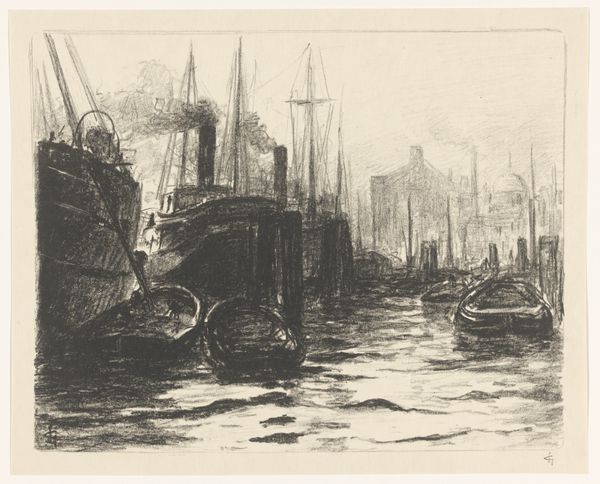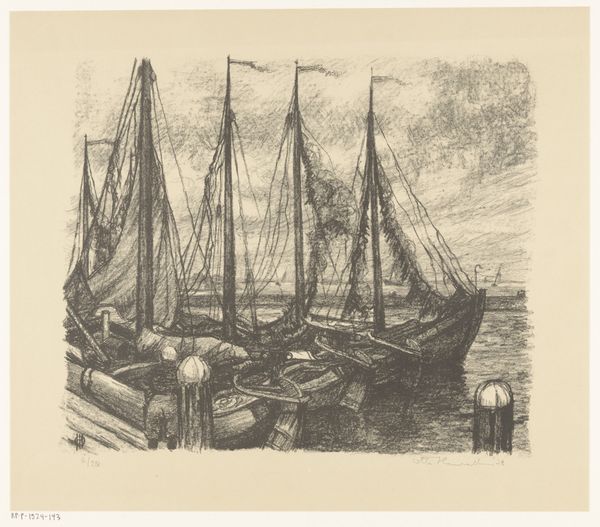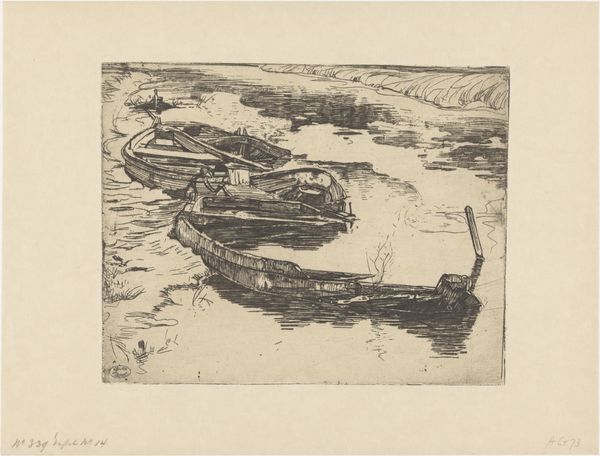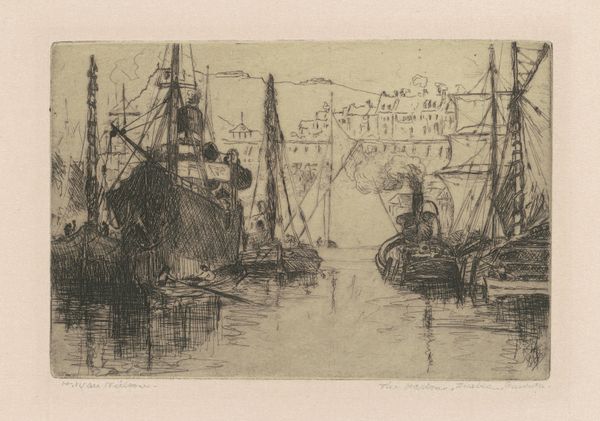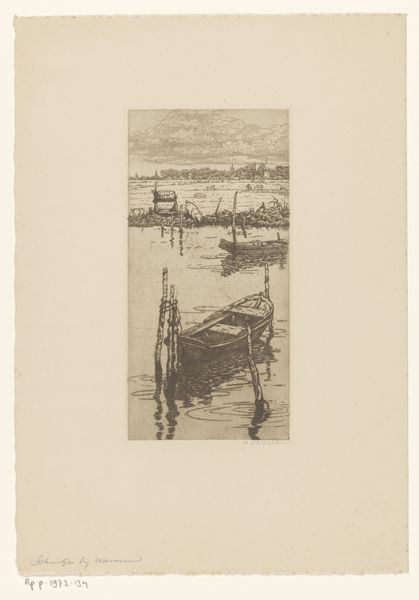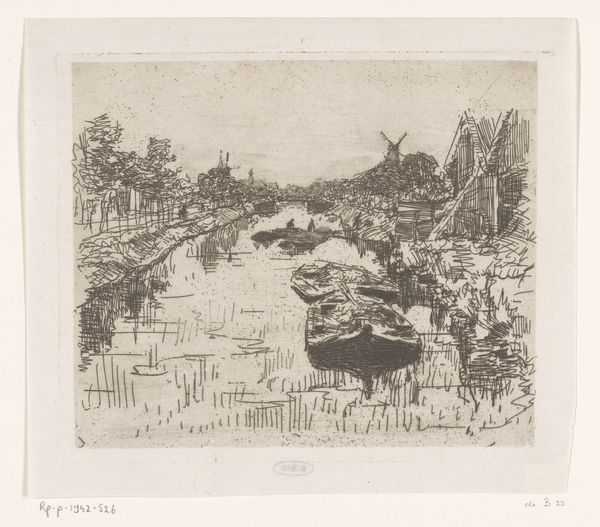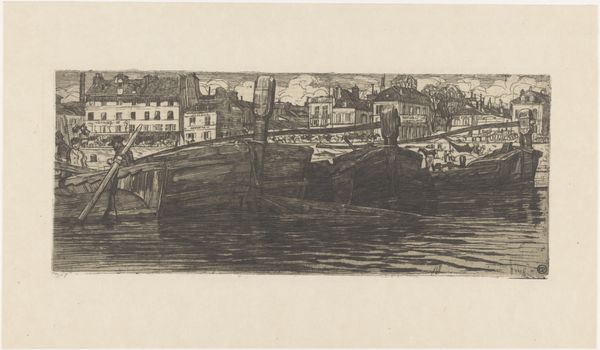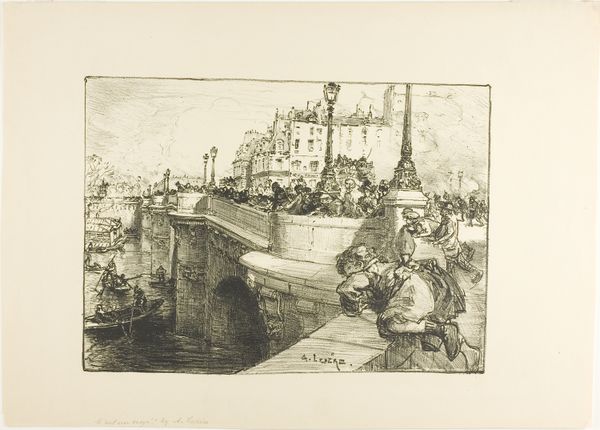
drawing, print, etching, paper, ink
#
drawing
#
dutch-golden-age
# print
#
etching
#
landscape
#
paper
#
ink
#
cityscape
#
modernism
#
realism
Dimensions: height 210 mm, width 400 mm
Copyright: Rijks Museum: Open Domain
Editor: This is Pieter Dupont's "Schepen in het Damrak in Amsterdam," created around 1895 using etching and ink on paper. It's a captivating scene, very detailed, and evokes a real sense of bustling activity. The water especially catches my eye. What do you see in this piece from a formal perspective? Curator: Observe the masterful control of line. Dupont orchestrates a complex composition through variations in stroke weight and density, wouldn’t you agree? See how he creates depth. Notice, too, how the high horizon line compresses the pictorial space, forcing our attention onto the interplay between the architectural forms and the masts of the ships. Do you find this a successful strategy? Editor: It is! It makes the boats feel much more imposing, almost stacked. And now I see how the reflections on the water are actually a collection of smaller etched lines, each contributing to the overall texture. Did he vary the chemicals to get such different results or would that have come from timing? Curator: Possibly the duration in the acid bath or even the number of times the plate was bitten by acid. Now consider the use of light and shadow, which gives a structured but not entirely photorealistic description, a clear aesthetic choice by the artist. Editor: So the stark contrasts aren't necessarily true to life, but a deliberate technique? Curator: Precisely. They establish a visual hierarchy, guiding the eye through the intricate network of forms. It exemplifies a key interest of the period - pushing the boundaries of printmaking through the lens of personal expression rather than simply replication. Editor: I had been focused on the scene, but you've revealed a new appreciation for the artifice of the printmaking itself. It’s much more complex than it first appears! Curator: Exactly! And in dissecting that complexity, we begin to appreciate the artist's intention and technical mastery.
Comments
No comments
Be the first to comment and join the conversation on the ultimate creative platform.
